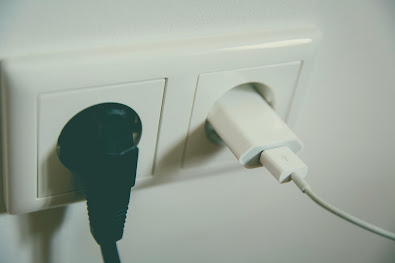Why Do Phone Chargers Get Hot While Charging?
Welcome back to Hobitronics — where we decode the daily mysteries inside your gadgets. Today we’re talking about something everyone has noticed at some point:
Why does your phone charger heat up when you're using it? — and why do the cheap ones feel like they might just melt?
That warmth isn’t just you imagining things. It’s real, and it’s telling you something about what’s happening inside the plastic shell of that adapter.
Especially with budget chargers, the heat is more than a minor annoyance — it’s a sign of energy loss, sloppy design, and sometimes, real danger.
1. What's Actually Inside a Charger?
Your phone charger might look like a simple plug, but it’s actually a clever little Switch Mode Power Supply (SMPS).
It takes the high-voltage AC from your wall and transforms it into a low-voltage, phone-friendly DC output.
Here’s the quick path:
-
230V AC in → DC conversion → stepped-down voltage → regulated output
Key parts of a charger includes:
-
Bridge Rectifier – changes AC to DC
-
Capacitors – smooth out the ripples
-
Transformer – safely drops the voltage
-
MOSFETs + PWM controller – switch current efficiently
-
Output filters – give you clean, stable power
It’s a pretty compact setup — but when things go wrong, they go hot.
2. Why Does It Get Warm?
Some amount of heat is normal. Whenever you convert energy — especially from AC to DC — you lose a bit in the form of heat.
Here’s where it happens:
-
Switching Losses from the MOSFETs
-
Transformer core losses and copper resistance
-
Voltage drop across rectifier diodes
-
Capacitor ESR (internal resistance causing heat)
Well-designed chargers minimize these losses. Cheap ones don’t.
3. What Cheap Chargers Get Wrong
Ever noticed how no-brand or super-light chargers get hot fast? Here's why:
-
Low-grade capacitors that break down faster
-
No heatsinks or ventilation — nowhere for heat to go
-
Poor PCB design — bad trace layout, poor grounding
-
No surge or EMI protection — dangerous for your device
-
No real output regulation — just blindly dumping power
All of this adds up to more internal resistance, more ripple, and more heat.
4. Fast Charging Adds Pressure
Fast charging standards like QuickCharge, PD, or VOOC crank up the voltage or current — or both. That means:
-
More current = more I²R losses (basic Ohm’s Law: more current through resistance = more heat)
-
If the charger isn’t built for fast charging, it will overheat fast.
5. Could It Be Dangerous?
Yes — especially in poor-quality chargers. Here’s what can go wrong:
-
Thermal Runaway: Heat builds → internal resistance rises → more heat → meltdown
-
Arcing or shorts due to poor insulation and layout
-
Fire risk, especially overnight or with heavy use
A good charger has protection built-in — thermal cutoffs, fuses, overvoltage shields. Cheap ones usually skip all of that.
6. How to Stay Safe
Here’s how to pick a charger that won’t roast your wall socket:
-
✅ Use certified brands or chargers with BIS/UL certification
-
✅ Match the charger to your phone’s max rated current
-
✅ Heavier charger? That’s usually a good sign — it means there’s a real transformer inside
-
✅ Avoid super-light, no-name adapters (especially from roadside kiosks)
-
✅ If it gets too hot to touch? Unplug it. Immediately.
7. Heat is a Message
Your charger warming up slightly? Normal. Your charger too hot to hold? That’s its way of saying:
Good electronics waste less energy as heat.
Cheap electronics leak heat because of sloppy design. And your phone — and your home — deserve better than that.
Follow hobitronics.blog for daily geeky breakdowns of everyday gadgets and appliances. One weird electrical mystery at a time. 💡
Stay Curious!








Comments
Post a Comment